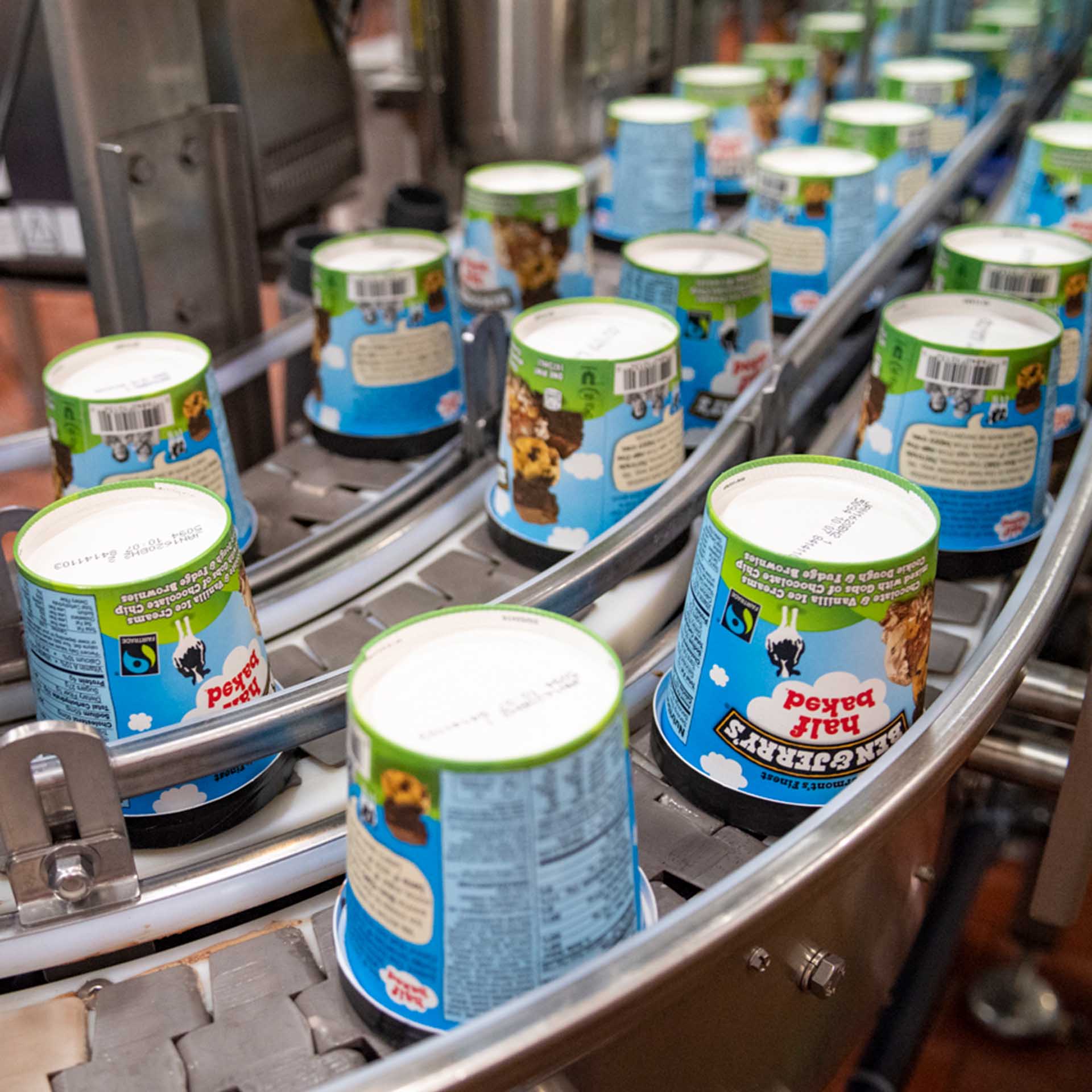
Ben & Jerry’s has always believed that ice cream can change the world. And while it’s true that ice cream puts smiles on people’s faces and brings people together, we can’t ignore the impact that our packaging has on the environment.
We’re on a journey to reduce our use of non-compostable petroleum-based plastics, which means a continued focus on and use of paper-based products. Similar to plastics, forests are inextricably linked to three things we care deeply about: environmental health, social justice, and climate change. We see an urgent need for – and are fully committed to – protecting the world’s forests. We’ve already begun this responsible journey as we’ve been using FSC certified fiber in our pints since 2009, but we want to further improve in this space. We’ve initiated work with Canopy and their Pack4Good initiative as they recognize the critical value of forests to biodiversity, climate, and traditional communities.
As part of this initiative, together with Canopy as well as our sourcing partners, we are working to ensure our sourcing does not come from wood pulp from Ancient and Endangered Forestsi across our supply chain, and we support the development of innovative processing techniques and fiber sources that reduce environmental and social impacts; examples include: circular systems of distribution, closed-loop technology, agricultural residuesii, and recycled fibers.
We also encourage our business partners to take these lower environmental impact, innovative alternative fibers to commercial scale in the coming years. We’re committed to getting to a place where we use Next Generationiii fibers as our first choice in design and sourcing.
As a supporting partner of Canopy’s Pack4Good Initiative, we will:
- Prioritize innovative packaging design and reuse systems to reduce overall material needs
- Give preference to paper-based packaging with high recycled content, specifically post-consumer, where it meets our technical requirements for a quality ice cream offering
- Work persistently with our partners, innovative companies, and Canopy to expand the availability, development and use of next generation fiber solutions, with a focus on agricultural residues and post-consumer recycled content
- Require that all paper-based packaging we source with virgin wood fiber comes from responsibly managed forests, with a preference for forests certified to the Forest Stewardship Council (FSC) certification system
- Assess our existing use of paper-based packaging, and though we do not believe that we source controversial papers, ensure we’ve eliminated sourcing fiber from Ancient and Endangered forests such as: Canadian and Russian Boreal Forests, Coastal Temperate Rainforests, tropical forests and peatlands of Indonesia, the Amazon, and West Africa by end of 2023 and work with Canopy and our suppliers to support collaborative and visionary solutions that protect these forests.
- Conduct additional due diligence and eliminate any sourcing from:
- Companies that are logging forests illegally
- Tree plantations established after 1994 through the conversion or simplification of natural forests
- Areas being logged in contravention of First Nations/tribal/indigenous peoples’ and local community rights, including the right to give or withhold their free, prior, and informed consent
- Should we find that any of our packaging fibers are being sourced from ancient and endangered forests, we will engage our business partners to change practices and/or re-evaluate our relationship with them
i Ancient and Endangered Forests are defined as intact forest landscape mosaics, naturally rare forest types, forest types that have been made rare due to human activity, and/or other forests that are ecologically critical for the protection of biological diversity. Ecological components of endangered forests are: Intact forest landscapes; Remnant forests and restoration cores; Landscape connectivity; Rare forest types; Forests of high species richness; Forests containing high concentrations of rare and endangered species; Forests of high endemism; Core habitat for focal species; Forests exhibiting rare ecological and evolutionary phenomena. As a starting point to geographically locate Ancient and Endangered Forests, maps of High Conservation Value Forests (HCVF), as defined by the Forest Stewardship Council (FSC), and of intact forest landscapes (IFL), can be used and paired with maps of other key ecological values like the habitat range of key endangered species and forests containing high concentrations of terrestrial carbon and High Carbon Stocks (HCS). (The Wye River Coalition’s Endangered Forests: High Conservation Value Forests Protection – Guidance for Corporate Commitments. This has been reviewed by conservation groups, corporations, and scientists such as Dr. Jim Strittholt, President and Executive Director of the Conservation Biology Institute, and has been adopted by corporations for their forest sourcing policies). Key endangered forests globally are the Canadian and Russian Boreal Forests; Coastal Temperate Rainforests of British Columbia, Alaska and Chile; Tropical forests and peat lands of Indonesia, the Amazon and West Africa. Ancient and Endangered Forests are mapped in ForestMapper and further defined in A Quick Guide to Ancient and Endangered Forests File Type: PDF (1.3 MB).
ii Agricultural Residues are residues left over from food production or other processes and using them maximizes the lifecycle of the fibre. Fibres used for paper products include cereal straws like wheat straw, rice straw, seed flax straw, sugarcane bagasse, and rye seed grass straw. Where the LCA (life cycle analysis) shows environmental benefits and conversion of forest land to on purpose crops is not an issue, kenaf can also be included here. (Agricultural residues are not from on purpose crops that replace forest stands or food crops.)
iii Next Generation (Next Gen) Solutions include paper packaging made with recycled and/or alternative fibres (e.g. agricultural residues) and fabrics made with alternative cellulosic inputs such as recycled cotton textile. They use on average 70% less energy and 90% less water, reduce emissions from forestry and field burning, and pollute less than conventional wood pulps.
*This policy is aligned with its parent company Unilever's People and Nature Policy, which is based on the principles of No Deforestation, No Development on peat, and No exploitation of People and Communities.